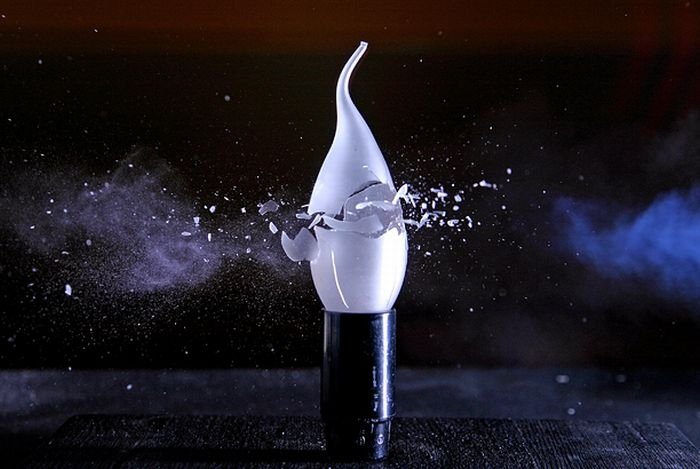|
|
High-speed Photographs By Lex Augusteijn
|
As film and mechanical transports improved, the high-speed film camera became available for scientific research. Kodak eventually shifted its film from acetate base to Estar (Kodak's name for a Mylar-equivalent plastic), which enhanced the strength and allowed it to be pulled faster. The Estar was also more stable than acetate allowing more accurate measurement, and it was not as prone to fire.
Each film type is available in many load sizes. These may be cut down and placed in magazines for easier loading. A 1,200-foot (370 m) magazine is typically the longest available for the 35 mm and 70 mm cameras. A 400-foot (120 m) magazine is typical for 16 mm cameras, though 1,000-foot (300 m) magazines are available. Typically rotary prism cameras use 100ft (30m) film loads. The images on 35 mm high-speed film are typically rectangular with the long side between the sprocket holes instead of parallel to the edges as in standard photography. 16 mm and 70 mm images are typically square rather than rectangular. A list of ANSI formats and sizes is available.
Most cameras use pulsed timing marks along the edge of the film (either inside or outside of the film perforations) produced by sparks or later by LEDs. These allow accurate measurement of the film speed and in the case of streak or smear images, velocity measurement of the subject. These pulses are usually cycled at 10, 100, 1000 Hz depending on the speed setting of the camera.
|
|









